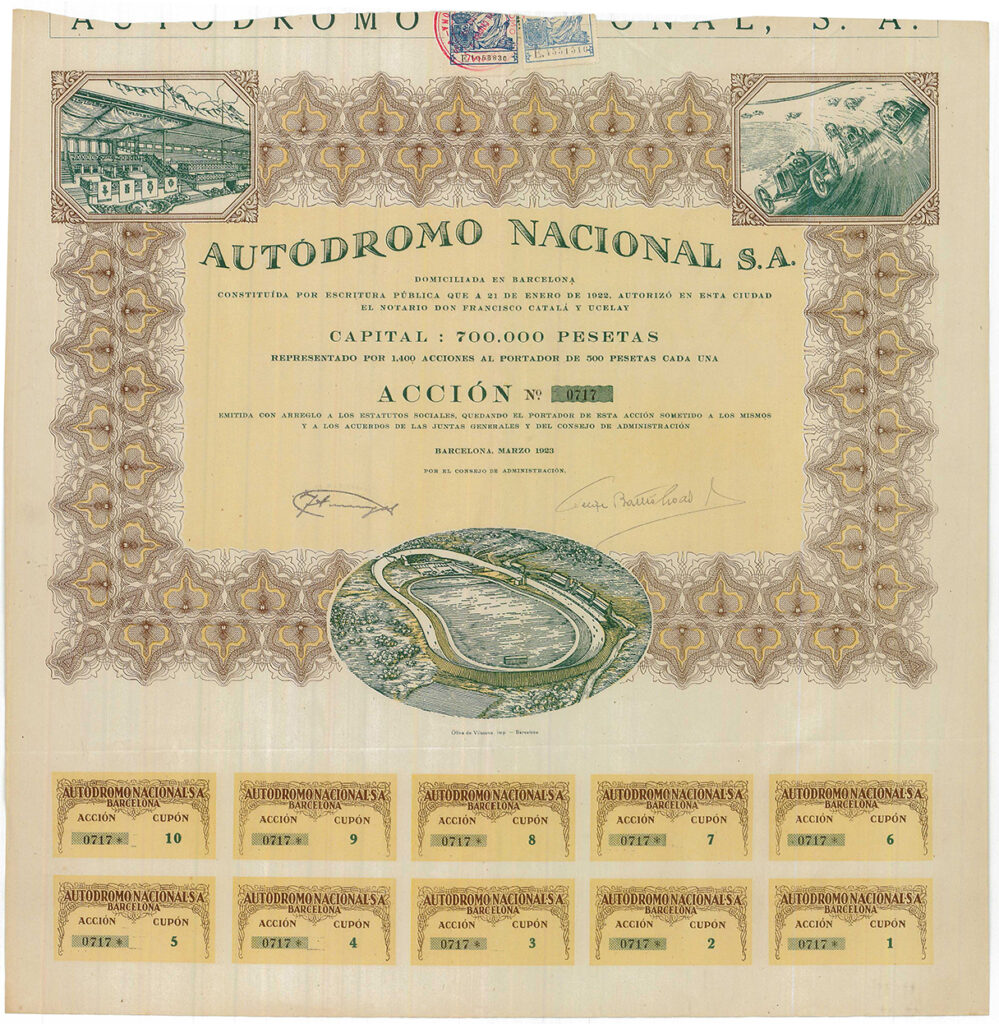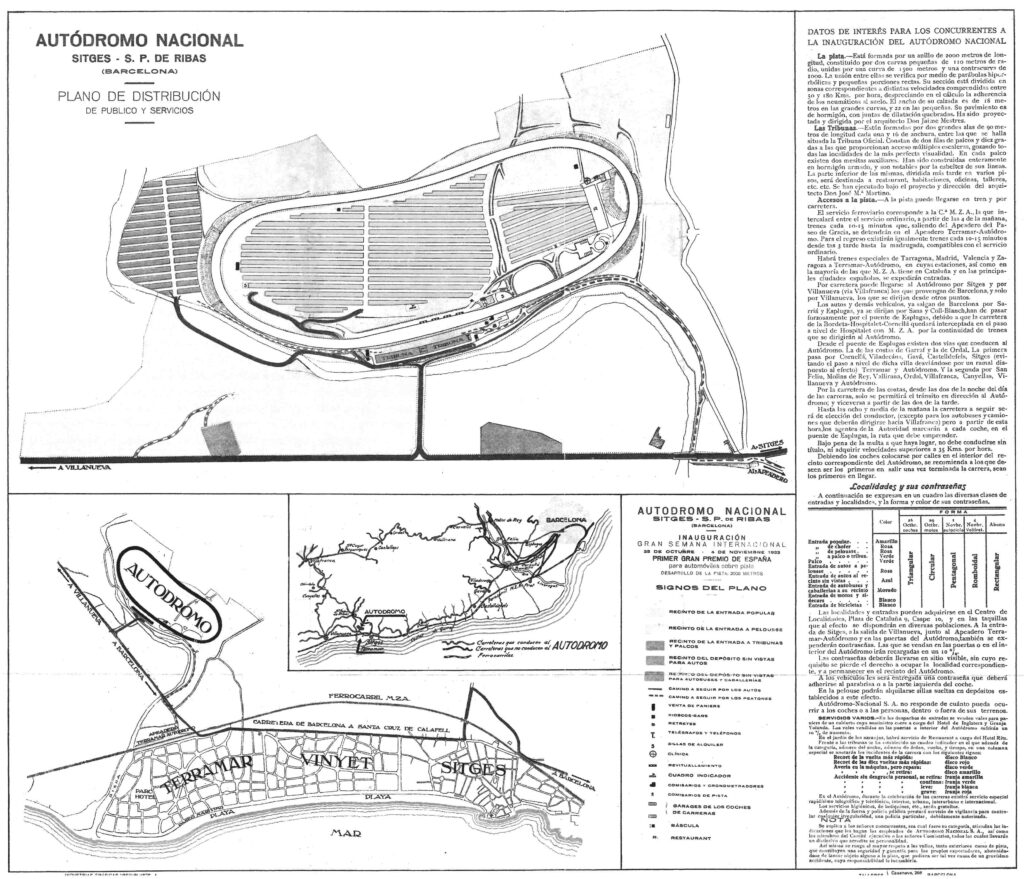This year marks 100 years since construction first began at the Autodrome Terramar. The idea for the Autodrome was first conceived by engineer Francesc Armengol. Armengol was the man behind Jardin de Terramar, an urban development built next to Sitges in 1919, and he saw a race track as an additional part of this development, something that was really quite new and exciting at the time.
The company Autódromo Nacional S.A. was founded in Barcelona on 21 January 1922 and legally registered before the notary Francesc Català i Ucelay. The company’s management council was made up of important cultural, social and economic figures from across Spain and presided over by Joan Pich i Pon, who would go on to become mayor of Barcelona in 1935 and later general governor of Catalonia. The company was led by Fric Armengué and managed by Armengol himself. The company also included a Committee of Honour which was presided over by the Duke of Alba – himself president of the Royal Automobile Club of Spain – and made up of representative bodies from the worlds of tourism, sport and journalism.

The new company was founded with an initial capital of 700,000 pesetas through 1,400 shares of 500 pesetas each. The first task was to purchase the land known as Clot dels Frares, so named after the 17th-century country house that had formerly been a house of rest for monks and had been immortalised in the paintings of noucentisme artist Joaquim Sunyer. The 24 hectares of land belonged to the church and the sale was agreed with the priest of Sant Pere de Ribes, Antoni Miret, and signed in the office of Joaquim Basora i Nin, a notary based in Vilanova. The Clot dels Frares was located next to the new town, Jardin de Terramar, but formed part of the township of Sant Pere de Ribas. As well as this land, the new company also bought 15 hectares of adjacent land where the Clot del Sidós was located, a property belonging to the Vilanova family.
With the transaction complete, Autódromo Nacional S.A. could finally get started on the important work: building the facilities and increasing their working capital, since 700,000 pesetas turned out to be not nearly enough. The purchase of the land itself had already required 208,000 pesetas, including the purchase of additional land to build a rail link from the Sitges-Vilanova line, which was just a kilometre away from the new site.
The capital increase was carried out through 600 shares at 500 pesetas each. The mayor of Sitges himself, Josep Planas, contributed 75,000 pesetas from the town hall, seeing that the project had great potential for a town that was already starting to see an increase in tourism and a growing number of visitors.
This new capital investment provided the necessary cushion for work to begin a few months later. The company hired the services of the prestigious architect Josep María Martino to build the grandstand and also contracted the German company Tanner & Eigenheer.




